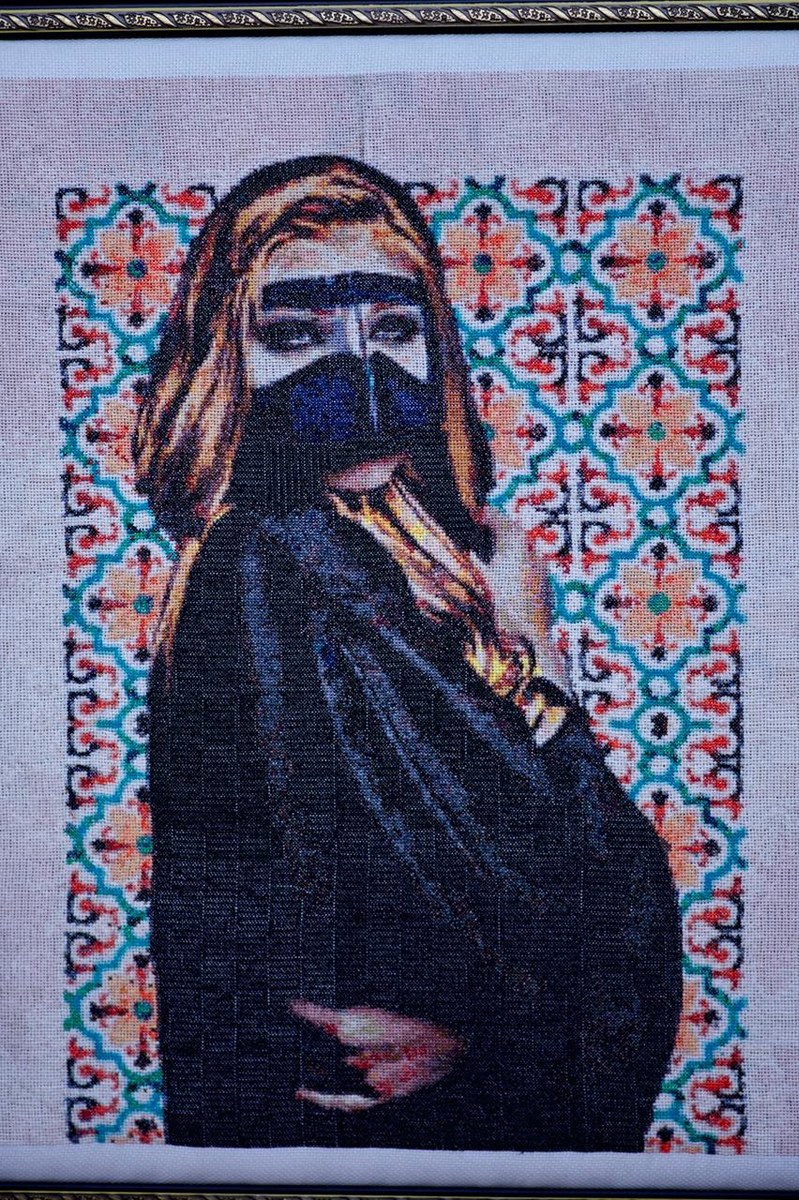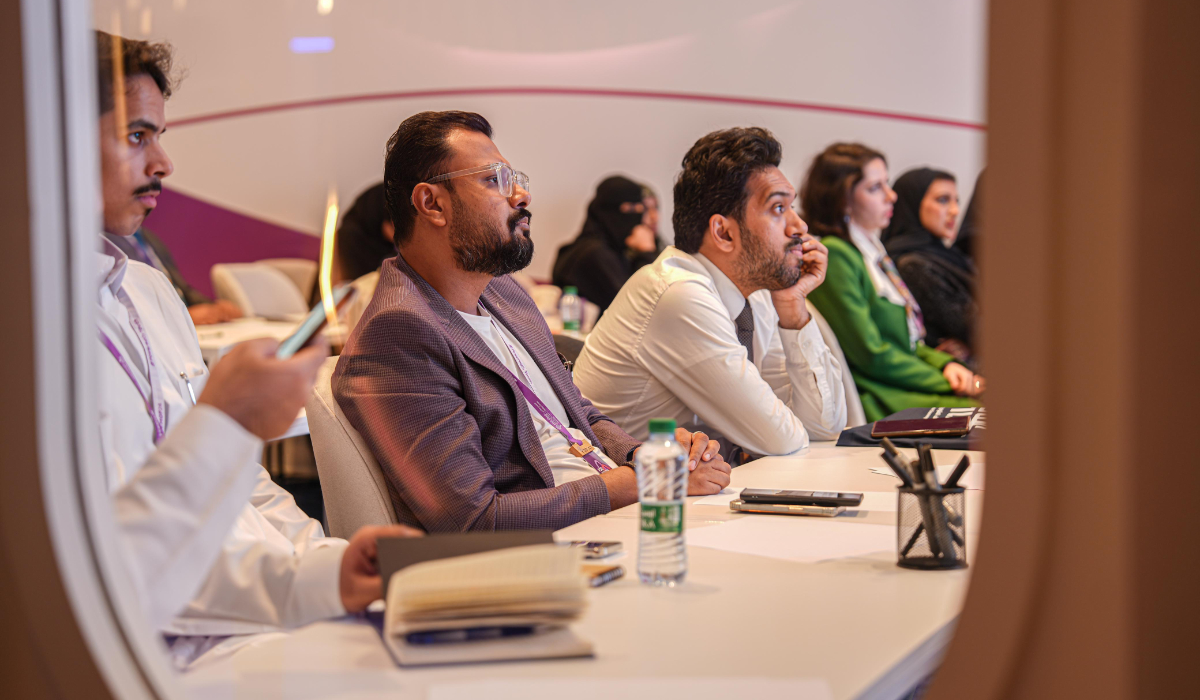JEDDAH: A thin needle, a thread, an Aida cloth and one’s imagination can create hundreds of picture-like projects for cross stitchers like Jeddah’s Alaa Al-Sawwaf, a stay-at-home mother who has been practicing the craft for more than 20 years.
These embroidery tools are familiar to her family, as she picked up the hobby from her grandmother when she was only 10 years old.
“It all started when I was 10 years old when I used to sit next to Fini, my Austrian grandmother who used to do a lot of handcrafts like knitting, crochet and needlepoint. It was very exciting for me just to be next to her and watch her knit,” Al-Sawwaf told Arab News.
“She got me my first needlepoint and knitting kit, and she started teaching me and correcting me when I would do anything wrong. My grandmother is the main reason behind my passion for needles and threads,” she added.
Recalling that time, the cross stitcher said that the Kingdom did not have shops that sold needlepoint tools, and that she purchased a counted cross stitching kit by accident while abroad. That brought Al-Sawwaf to a hobby that she greatly identifies with.
“We used to get it from Austria, the UK or the US. I remember once when we were in New York in summer and I was shopping for my needlepoint kits, I bought a kit thinking it was needlepoint, but I didn’t open it until we came back to Jeddah. Once I opened it I didn’t understand what was going on, I started reading all the instructions carefully and it was love at first stitch,” she said.
“What made me fall in love with counted cross stitching even more is that while stitching, I don’t know what I’m stitching. I look at it from afar, and then I see the whole picture. My heart always skips a beat from the beauty that my hands just stitched,” she added.
FASTFACT
A small project can take three to six weeks, while larger and more complicated ones can take 11 months or up to two years.
@lulusstitches is Al-Sawwaf’s handle on both Instagram and Tiktok. She said she receives great support on social media, especially on Instagram.
“I found my community there, and it’s a big one. They are mostly from abroad. I learned so much from them and they gave me such great support,” she said.
Al-Sawwaf’s favorite project is “Al-Shaikhah.” To create it, she used about 78 colors and it took her two years to finish. It is a portrait of a woman dressed in traditional bedouin wear, an image credited to another artist on Instagram, @ahmadart86.

A close up of one of Alaa Al-Sawwaf’s cross stitch project.
“I found myself stitching her. I knew my style and what I like to do through stitching her. It’s an amazing feeling when you think that you are just stitching another project, but then it becomes the piece that you saw your style and yourself in,” she said.
Al-Sawwaf highlighted the importance of cross stitchers taking care of their hands, neck, back and eyes regularly, in order to prevent injuries or strains.
“We stitchers need to take care of not only our hands but our necks, backs and eyes too. Before stitching, it’s better to try to stretch your hands and wrists. It’s very important not to stress the hand by holding the hoop or the needle too firmly. It’s a joyful hobby — relax your hand and enjoy your stitches and try to move your hands from time to time,” she added.
“Your neck and back should be straight while working on your project — choose the right chair with pillows to support your hands, back and shoulders. The eyes are the most important, in my opinion. You need enough light and the perfect glasses or reading glasses. Don’t overuse your eyes. Once they get tired and teary, stop.”
What made me fall in love with counted cross stitching even more is that while stitching, I don’t know what I’m stitching. I look at it from afar, and then I see the whole picture clearly. My heart always skips a beat from the beauty that my hands just stitched.
Alaa Al-Sawwaf
Al-Sawwaf said that the time needed to finish a project depends on its size. A small project can take three to six weeks, while larger and more complicated ones can take 11 months or up to two years.
The cross stitcher is currently being treated for Fuchs’ dystrophy, a buildup of fluid in the cornea of the eye.
“This disease leads to eventually losing your sight over time, and the only way to save it is to do a cornea transplant,” she said.
Her passion for her hobby is driving her persistence and determination to recover from the illness.
“With Fuch’s disease, you lose your sight and go blind. I’m left with two choices — either lose my sight and adjust to this new life or go ahead with surgery. I chose to see and decided to go through it all just to be able to see and keep doing what I love most — stitching,” she said.































